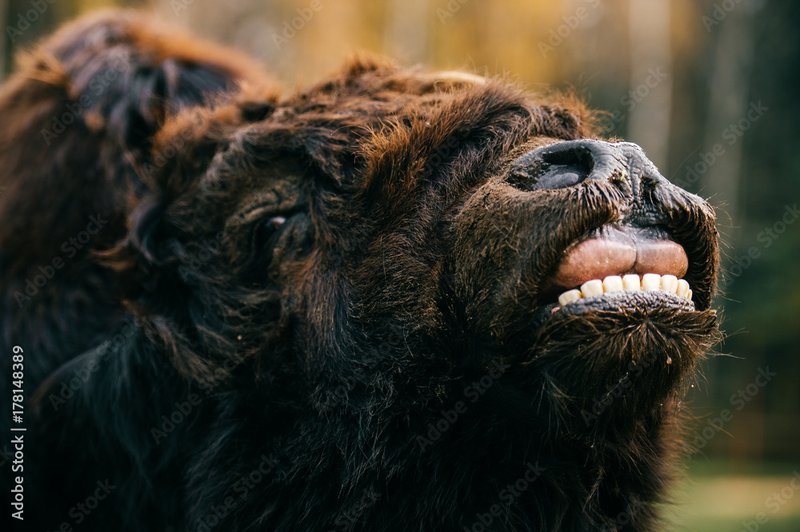
Yaks have a fascinating appearance. With their long, shaggy fur and impressive horns, they seem more like gentle giants than fearsome beasts. Still, they are strong animals that can weigh around 1,000 pounds or more. While they’re generally known for their docile nature, it’s essential to understand their behavior and how they interact with humans. So, can yaks be dangerous? Here’s what you need to know.
Understanding Yak Behavior
Yaks primarily reside in the high altitudes of the Himalayas and nearby regions. They are herbivores, mostly munching on grass and other vegetation. Generally, yaks are not aggressive and often prefer to keep to themselves. However, just like any animal, they can feel threatened. When yaks perceive danger, or if their young calves are nearby, they may react defensively.
Interestingly, yaks have a social structure. They live in herds, which can provide safety in numbers. These herds often consist of females and their calves, while the males might be more solitary. Understanding this social behavior can help explain why they may act aggressively at times. If you encounter a herd, keeping your distance is wise, especially if you see young ones.
When Yaks May Become Aggressive
While yaks are usually calm, certain situations can trigger aggression. For example, if a yak feels cornered or threatened, it may lash out. Here are a few scenarios where yaks might show aggression:
- Protecting their young: Mother yaks are particularly protective of their calves. If you get too close, a mother yak might charge.
- Feeling trapped: If a yak has nowhere to go, it can become scared and react violently in self-defense.
- Males during mating season: Male yaks can become territorial and aggressive during this time, especially when competing for a mate.
In these circumstances, it’s best to stay calm and keep your distance. Yaks aren’t naturally inclined to attack, but it’s their instinct to protect themselves, much like how many animals behave when feeling threatened.
How to Safely Interact with Yaks
If you’re trekking in yak territory, you might want to get a closer look at these magnificent creatures. Here are some tips for safely interacting with yaks:
- Keep your distance: Observing yaks from afar is the safest approach. Use binoculars if you want a closer look without getting too near.
- Stay calm: If you find yourself close to a yak, remain still and avoid sudden movements. This will help you appear non-threatening.
- Follow local guidelines: In many trekking areas, locals will have guidelines for interacting with wildlife. Always heed their advice.
By respecting their space and needs, you can enjoy witnessing yaks without putting yourself or them in danger.
Signs of Aggression in Yaks
It’s crucial to recognize when a yak might feel threatened or aggressive. Here are some behaviors to watch for:
- Vocalizations: Yaks can grunt or bellow when they feel disturbed. If you hear these sounds, it’s a sign to back off.
- Body posture: An aggressive yak may lower its head, raise its hackles, or stomp its feet. These are clear signals that it feels threatened.
- Charging: If a yak starts charging towards you, it’s time to make a quick exit. They can reach surprisingly high speeds!
Being aware of these cues can help you avoid dangerous situations and ensure a harmonious encounter with these majestic animals.
Comparing Yaks to Other Livestock
You might be wondering how yaks stack up against other livestock in terms of danger. Compared to animals like bulls or even domesticated dogs, yaks are generally less aggressive. Here’s a quick breakdown:
- Bulls: Often more aggressive during mating season, bulls can be much more dangerous than yaks.
- Horses: Horses can kick and bite, making them unpredictable, while yaks are typically less volatile.
- Goats: Goats can be mischievous and might headbutt if feeling threatened. Yaks, on the other hand, tend to be more defensive than offensive.
While it’s always important to respect the space of any animal, yaks are usually a bit more gentle compared to other livestock.
In summary, yaks are generally friendly creatures, but like any wild animal, they can be dangerous if they feel threatened. Understanding their behavior and knowing how to interact safely is critical if you’re in their territory.
Treat yaks with respect and awareness, and you’ll likely have a rewarding experience observing these amazing animals in their natural habitat. Just remember to keep your distance, stay calm, and always be mindful of their young. With knowledge and caution, you can enjoy the beauty of yaks without any worries. Happy exploring!

